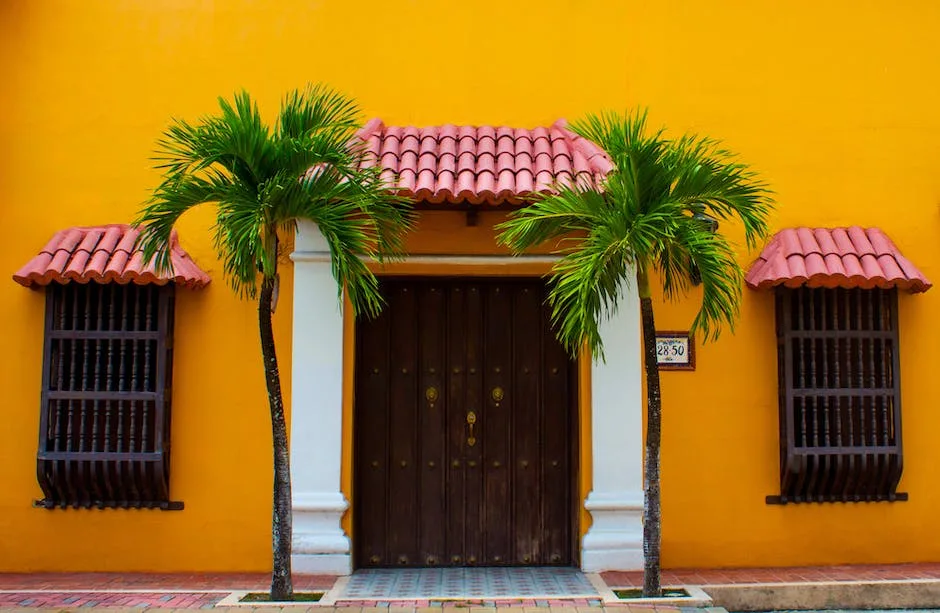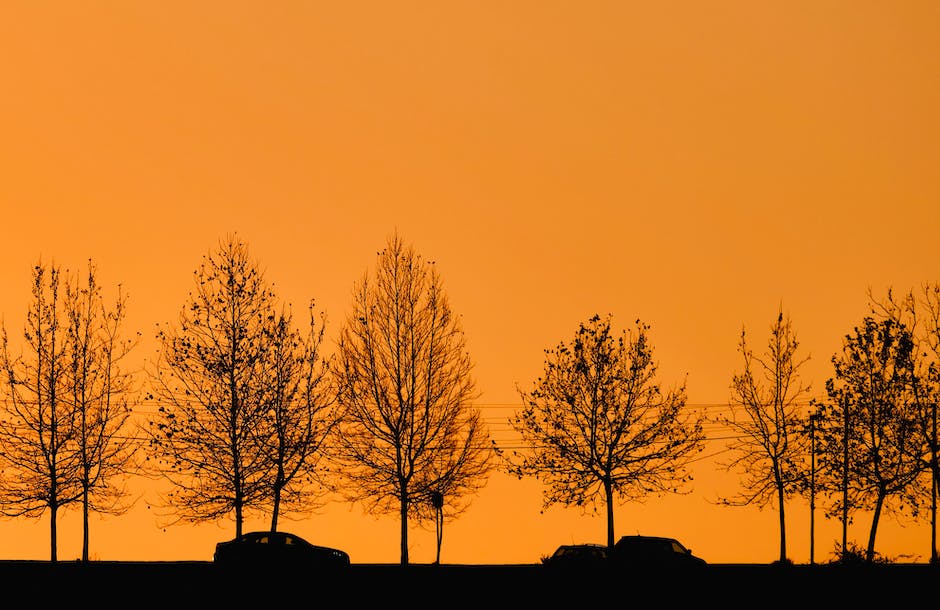Many people think that palm trees turn yellow in the winter, but this is not the case. Palm trees are actually evergreen, meaning they keep their leaves year-round. However, their leaves do change color in the winter, turning a deep red or burgundy. So, if you see a palm tree with yellow leaves, it’s probably because it’s sick or dying.
No, palm trees do not turn yellow in the winter.
How do I keep my palm tree from turning yellow?
If your palm trees have yellow leaves due to nutritional deficiencies, you will need to fertilize them with a fertilizer that contains nitrogen, potassium, and magnesium in order to restore them to health. One of the most common reasons for palm leaves turning brown is a fungal infection, so be sure to treat your palm trees accordingly.
When a leaf loses its chlorophyll, the plant abandons it and begins to absorb leftover nutrients from the leaf. This is why once the leaf turns yellow, you generally can’t make it turn back green again. In cases of nutrient deficiencies, sometimes yellow leaf color can green back up again with treatment.
What happens to palm trees in the winter
Palm trees generally become dormant in cool weather, such as from late fall through winter. This means its growth slows or stops until warm weather returns. It’s a survival tactic to get through the inhospitable cold season. Perhaps the most remarkable dormancy ability of palms lies in their seeds.
If you see yellowish fronds on a palm for more than three days, it is a sure sign that the palm has a nutrient deficiency. Older fronds that are yellow indicate a potassium or magnesium deficiency.
How often should you water palm trees?
A new palm should be watered everyday on its first week, switch to every other day the following and then settle for 3 times a week on the third. Then water as normal for established plants. For more established palms, watering should be done only 2-3 times per week, and this is only in the absence of rainfall.
If you notice your majesty palm leaves turning brown, it could be due to the temperature being too hot or too cold. Excessive heat will usually cause dryness and lighter brown spots, while cold will cause darker browning, even black. You might also notice drooping.
Should I cut yellow leaves off?
If you see any yellow or brown leaves on your plants, it’s a good idea to trim them off or pluck them away. This will help prevent any unwelcome plant pests from settling onto your plant, as they are attracted to decaying or dead leaves more than healthy ones. Plus, a struggling plant is more likely to have pests than a healthy plant. So by trimming away the dead leaves, you’re helping to keep your plant healthy and pest-free.
If you see any of these signs in your palm tree, it’s likely that it’s being overwatered. To correct the problem, allow the soil to dry out completely before watering again.
How do I make my palm tree greener
It is important to properly care for your dying palm tree in order to ensure that it remains healthy and continues to provide shade and beauty to your home. Proper care includes adding the right amount of water, using high-quality fertilizer, keeping fertilizer 2 ft away from roots, and using high-quality soil. Additionally, you should only cut fronds after they are completely dead and avoid pruning during hurricane season. Finally, be sure to plant palms trees at the right level to ensure they receive the proper amount of care.
Since small palms are more prone to damage from cold weather, it’s important to give them some extra protection during a cold snap. One way to do this is to mulch them with a layer of chopped leaves. This will help to insulate the plants and protect them from the cold. Just be sure not to smother the plants completely, as they still need some airflow to prevent them from getting too warm. During a very cold snap, you may need to add a box or blanket over the leaf mulch to give the plants even more protection. Just be sure to remove it after a few days, as palms can suffer if they don’t get enough sunlight.
How do you keep palms warm in the winter?
Wrapping your palm tree in a blanket or landscape fabric will help protect it from the cold weather. Be sure to use a synthetic blanket or landscape fabric so that the warm air rising from the soil stays underneath to keep the palm warmer than the outside air.
Palm trees can be quite hardy in their native ranges, but they may have problems when they are transplanted to regions that aren’t specifically adapted to their needs. For example, palms that live in areas with violent storms, cold snaps, and even excessively wet winters can be prey to leaf loss.
Should I cut off brown palm leaves
If you notice that your tree’s leaves are starting to turn brown at the tips, it may just be a sign of stress. However, if the leaves are fully brown, dead, or dying, it’s okay to trim them off. Just be careful not to trim too many leaves at once, as this can stress the tree out.
If you have an overwatered palm tree, there are a few sure signs to look out for. These include pale, droopy leaves, root rot, yellowing leaves, mold growth, and pests. If you think your palm tree is overwatered, there are a few methods you can try to save it. These include removing root rot, repotting the tree, and using new potting soil. With a little care, your overwatered palm tree can be saved!
What does a dying palm tree look like?
What to do when you think your palm tree is dying or already dead:
1. Look for wilting, discolored, or stunted palm fronds. These are the first signs that something’s not right with your palm tree.
2. Try to determine the cause of the problem. Is the tree getting enough water? Is it being attacked by pests?
3. If the cause of the problem can be remedied, take action to save the palm tree.
4. If the tree is beyond saving, you may need to remove it to prevent it from harming other plants in your landscaping.
If you want to keep your palm healthy, it’s best to avoid direct sun. too much sun can burn the leaves and cause brown leaf tips. Keep your palm in partial shade or in an area indoors that receives indirect sunlight.
How long can palm trees go without water
Keep your palm tree in a terrarium if you want it to last longer without water. This will help to keep the tree hydrated and prevent it from drying out.
If the top center stalks of your palm tree are turning brown and/or shriveling, your tree is not doing well. This is the most common sign that your palm tree is sick. Be sure to look at the top center portion of the palm tree first when you are checking the health of the tree.
How do I revive my cold palm tree
Palm trees are not able to easily handle disease and damage or repair wounds, which means that once the center, or “heart,” of a palm tree has been frozen, it is not likely to survive.
Palm trees are a popular decoration in many homes and gardens because they are evergreens. This means that they do not shed their leaves in any particular season; their foliage persists and remains green all year long.
Do yellow leaves mean over watering
If you think your plant may be overwatered, check the soil before watering again. If the soil is wet or mushy, it’s likely that your plant is getting too much water. Hold off on watering and let the soil dry out a bit before watering again.
Water is essential for plants, but too much or too little can wreak havoc. Poor drainage or improper watering is the leading reason behind yellow leaves. In overly wet soil, roots can’t breathe. They suffocate, shut down and stop delivering the water and nutrients plants need. Underw
Do yellow leaves always mean overwatering
Yellow leaves on a plant can indicate a number of different things, depending on the plant species and other symptoms the plant is exhibiting. Overwatering, underwatering, mineral deficiency, temperature stress, and other factors can all be causes of yellow leaves. If you notice your plant’s leaves are turning yellow, it’s important to observe other signs and clues to determine the cause so you can take appropriate action.
Wilting occurs when a plant does not have enough water. This can happen if the plant is overwatered or underwatered. To determine which it is, check the soil. If the soil is wet, the plant is overwatered. If the soil is dry, the plant is underwatered.
How do you keep palm trees healthy
Water deeply and thoroughly to promote healthy root growth. Plants exposed to sun and wind in outdoor containers dry out faster than plants in the ground; they may need daily summer watering. Containers in protected indoor locations hold moisture. Give container palms extra attention.
If you think your plant is being underwatered, check the soil. If it’s dry several inches below the surface, it’s time to water. Signs of underwatering include dry leaves, brown tips, leaf drop, wilting, and leaf curling. The plant will improve after watering.
If you think your plant is being overwatered, check the soil. If it’s wet several inches below the surface, it’s time to stop watering. Signs of overwatering include yellowing leaves, brown tips, wilting despite wet soil, and also symptoms of underwatering if root rot has started.
What fertilizer to use for yellowing palm trees
Mature palms should be fertilized with 8-2-12 fertilizer, which is a complete, granular palm tree fertilizer. This fertilizer contains all the essential elements, including manganese. Manganese helps prevent yellowing and necrosis between the leaf veins, and also reduces leaf size.
Potted palms are best fed with palm focus or soluble palm fertilizer. Soluble is very economical so if you have lots of palms, palm focus is very expensive to use. Palms in the ground are best fed using slow release fertilizer.
Final Words
No, they don’t.
Based on the information provided, palm trees turn yellow in the winter due to the lack of sunlight and the cool temperatures.
Jackson Hill is a passionate arborist with years of experience in the field of trees. He developed his fascination with trees at a young age, spending countless hours exploring the forests and climbing trees. Jackson went on to study arboriculture and horticulture at Michigan State University and later earned a degree in forestry from the University of Michigan.
With his extensive knowledge and expertise, Jackson has become a trusted authority on trees and their impact on the environment. His work has helped shape the field of arboriculture and he continues to be a leading voice in the industry.
